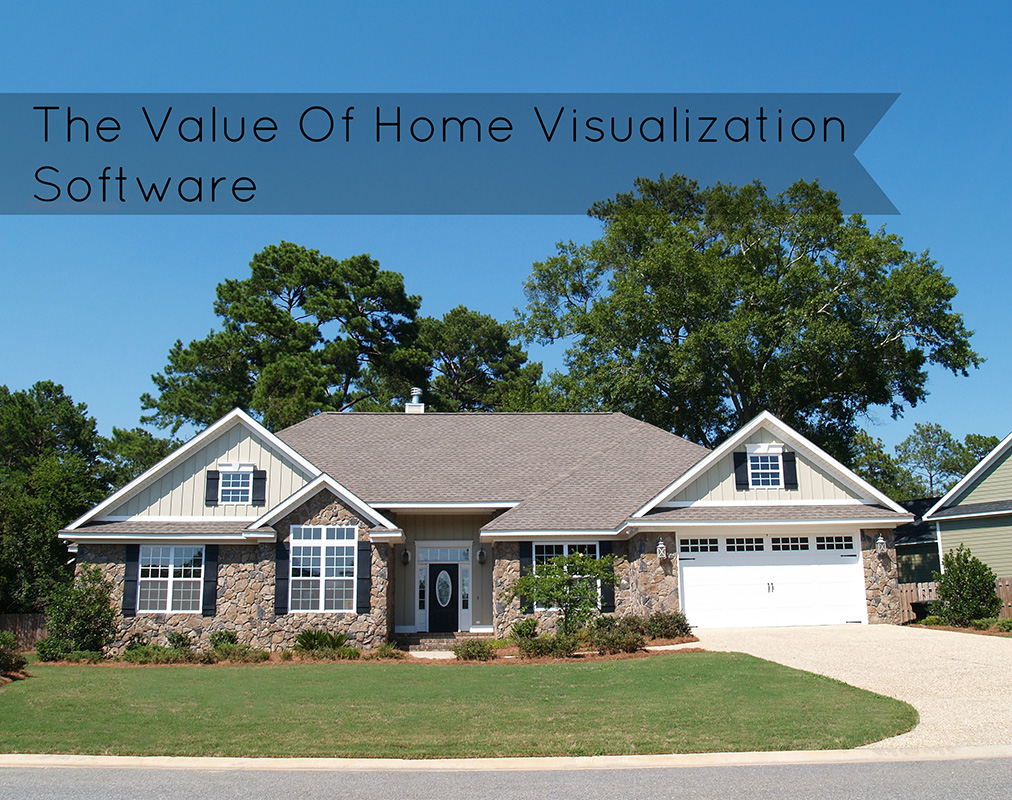How To Go Beyond Product Brochures & Stock Photos When Presenting Your Products To Homeowners
Home renovation companies that use a visualizer when presenting their products create a competitive advantage over contractors who stick exclusively with more ‘old-fashioned’ methods like brochures and product samples.
While samples, brochures, and manufacturer websites all still have a place in product presentations, home visualization software engages homeowners on a deeper level.
To see how this works, imagine this typical scenario:
Let’s say a homeowner has decided to get new siding. Two contractors are called and appointments are scheduled. (Siding is the example here, but using home visualization software is broadly applicable to flooring, windows, roofing, painting, interior remodeling, and more).
Contractor A is the first to meet with the homeowner. Being a competent company, they show up at the appointed time and promise quality products and installation. At the meeting, they bring some samples of actual siding, have a product brochure, and can access the manufacturer’s website on a computer tablet to show the prospects different colors and styles.
All in all, Contractor A is doing a credible job of presenting their products. They’ve got actual physical samples of the siding. They’re also using a nice blend of old-style techniques (a brochure) and technology (tablet for showing the manufacturer website) to convey important information to the homeowner.
But how does this look from the homeowner’s point-of-view?
They may not be as engaged by the product sample as Contractor A had hoped. How easy is it for them to visualize how a small sample of siding will translate when their entire home is wrapped in it?
Bringing a few samples of siding and showing them a few generic photos from a website is not enough to fully engage the prospect. No one tries to sell somebody a car by detaching the door and saying, ‘look at this, would you like a car that has a door like this?’
Next, Contractor A moves on to the pictures on the manufacturer’s website. The homeowner may enjoy seeing colors and style choices. But again, from the prospects point-of-view, the information is incomplete. What they really want to know from a product presentation is: how will this look on my home?
Now let’s say that it’s Contractor B’s turn. They bring everything that Contractor A did, but also use home visualization software as part of their product presentation.
This converts the experience from trying to push the homeowner into deciding based on a small sample or generic website pictures, into a true shopping experience for the prospect. The conversation becomes more engaging: “Here’s some samples, but now let me show you how this would look on YOUR home.”
This subtly but powerfully shifts the dynamic of the product presentation. Instead of a sales pitch where you hope they can imagine your product on their home, it becomes a combination of a consultation plus a fun “shopping trip” for siding.
Contractor B also enjoys two other advantages:
- The efficiency of presenting products is enhanced by a home visualizer. Once you have a picture of your prospect’s home loaded and set up in the software, showing product after product is just a matter of clicking your mouse.
- Upselling becomes free of friction. During a product presentation, samples are simply not as effective as a home visualizer in selling your higher-end products. Actually seeing the better product on their specific home is an effective motivation for many homeowners.
How is this hypothetical scenario between Contractor A vs. Contractor B most likely to end? More homeowners are going to choose Contractor B, even if the quote is higher. Most prospects simply feel more comfortable with a home renovation company that can say, “this is how your home will look when the project is completed – this is what you get for your investment.”
If you want to know more about exactly how home visualization software works, and how you could integrate it into your own product presentations, personalized demo sessions are available. These demos are free and there is no obligation.
